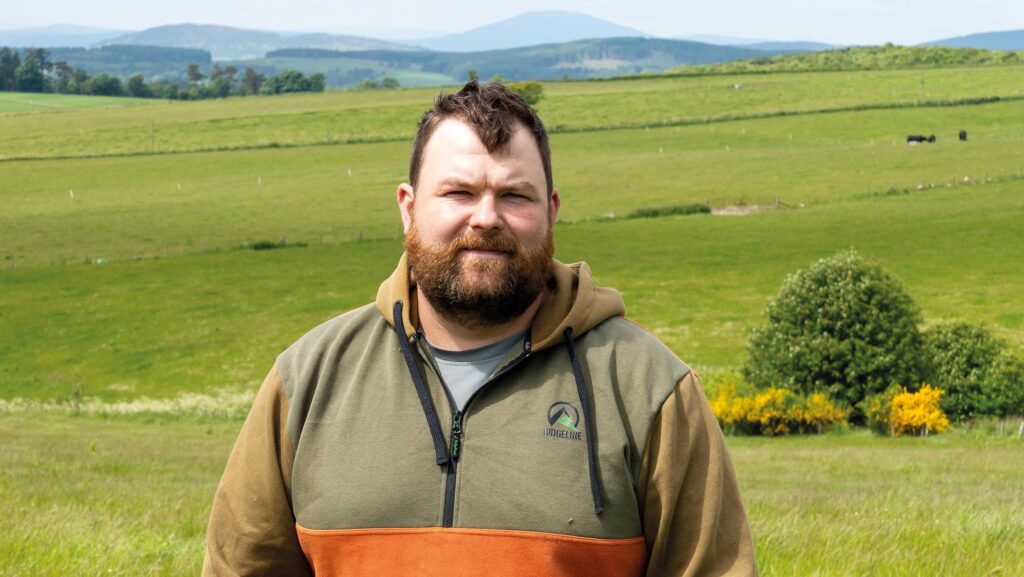Farmer Focus: You can tell which calves have lost nose flaps
 Duncan Morrison © Angus Findlay
Duncan Morrison © Angus Findlay Weaning is under way. More than half of our calf crop is already done.
It is always a satisfying job, getting the calves through the yards and over the scales.
It is a great time to get a handle on their temperament too as, for most of the calves, it is their first time being properly handled.
We assess docility at the crush for each calf on a scale of 1-5, which helps inform breeding decisions later.
We all know the hassle that temperamental cattle can cause, so we try our best to select for docility.
Of course, adequate handling facilities play their part, and we are always trying to improve where we can.
See also: Suckler business lifts margin £353/ha with fewer cows
For us, a big part of weaning revolves around using Quiet Wean nose flaps as part of a two-stage weaning process.
We have used them for many years and really like how they minimise stress on the calves.
However, this requires an additional handling to fit them, although I think the time that it takes is more than justified.
I am always amazed at how unperturbed the calves are once they are removed from their mothers, with their main priority to fill their rumen rather than stand bawling.
Pneumonia is usually not a problem for us, and I put a lot of that down to low-stress weaning.
It is not a foolproof system – occasionally flaps fall out. It’s quite noticeable post-weaning which calves lost their flaps from the amount of bawling they do.
Calves forward-graze under electric wires and get access to silage unwound with a bale unwinder, so they are used to fending for themselves before weaning.
We are trialling keeping calves on fitter cows into the winter, weaning later (possibly January or February).
I hope this maintains growth rates on calves through winter and helps with overall cow condition and resource use, but we will see.
They will strip-graze kale with bales of wholecrop and red clover silage, and it will be interesting to see how they perform.
We have made a start to pregnancy testing, and 100% of our heifers were in-calf in two cycles. However, it is not all positive.
My three-year-old Ford Ranger requires a new engine after a timing belt failure.
I think I jinxed it in my last article when I said I preferred livestock to machinery.

